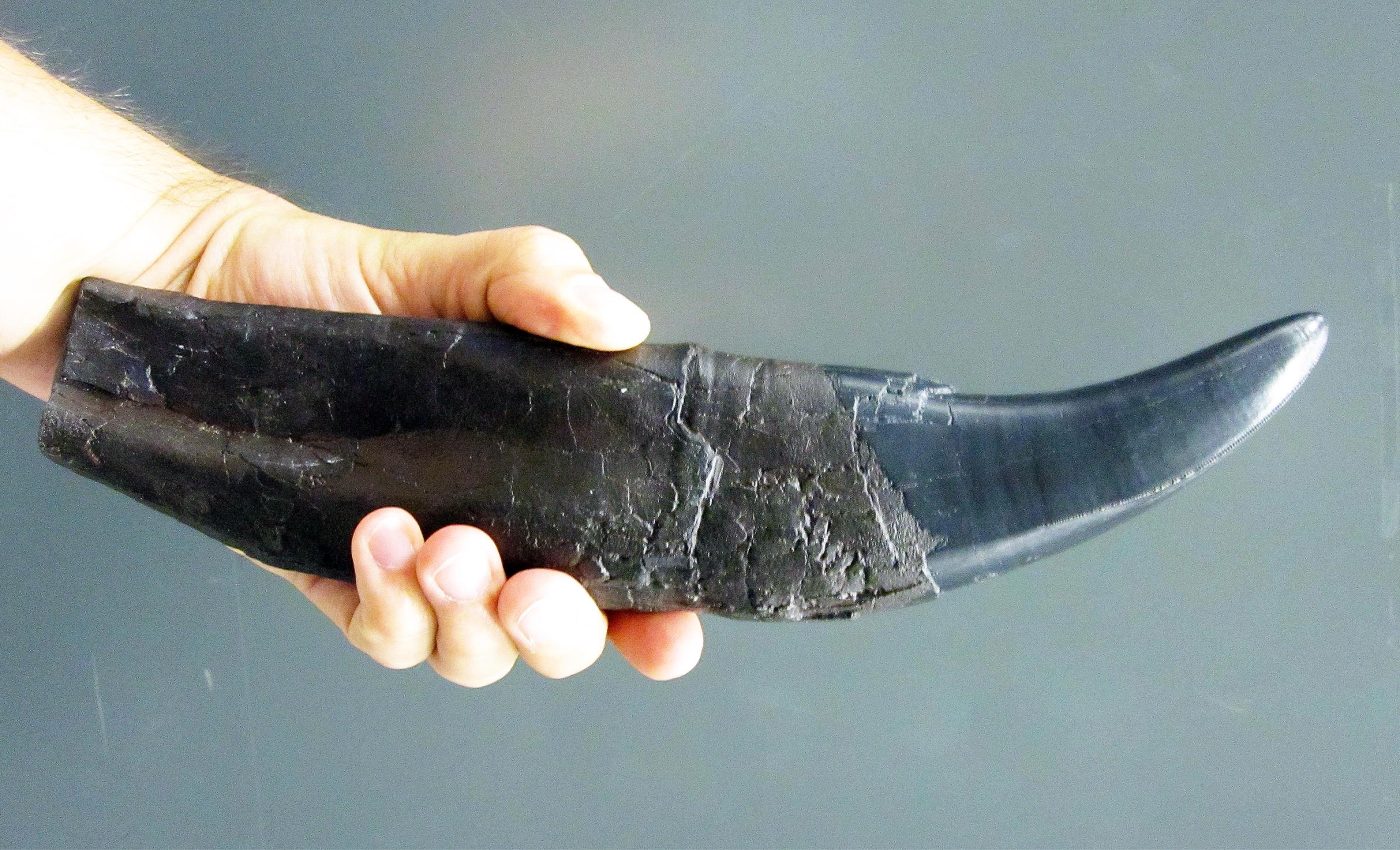
Dinosaur teeth reveal CO2 levels and climate conditions in the Jurassic Period
Dinosaur teeth are best known for their bite, yet new research says they also stored a chemical snapshot of prehistoric air. By probing that record, scientists have rebuilt carbon dioxide levels and plant productivity for the age of dinosaurs with a detail once thought impossible.
The study comes from Dr. Dingsu Feng and colleagues at the University of Göttingen, the Johannes Gutenberg University Mainz (JGUM), and Ruhr University Bochum (RUB).
Feng’s team focused on the Mesozoic Era, a span from 252 million to 66 million years ago when ecosystems ran hot and lush.
Dinosaur teeth lock in ancient air
The outer coat of a dinosaur’s tooth, made of durable tooth enamel, is harder than bone and shrugs off most chemical change.
Inside that enamel sits a mix of oxygen atoms captured when the animal breathed and drank, effectively sealing in the atmosphere of its time.
“Our method provides us with completely new insights into the Earth’s past,” stated Dr. Feng. He and his co-authors adapted a laboratory technique that separates the three natural oxygen isotopes in enamel to parts per million accuracy.
Isotopes reveal past climate
What they measured is called the triple oxygen isotope signal. A slight excess of the rare isotope in atmospheric oxygen rises when carbon dioxide climbs and falls when global plant growth, or gross primary productivity (GPP), surges.
Because animals incorporate that signal through their body water, enamel preserves it like handwriting in stone. Earlier studies proved the idea in Cenozoic mammal teeth, but this is the first time it has been applied to dinosaurs.
“The analysis of the three oxygen isotopes in dental enamel allows us to also measure the proportions of oxygen assimilated with respiratory air and drinking water,” explained Professor Thomas Tütken of Mainz. His remark highlights why enamel, not bone, became the sample of choice.
Dinosaur teeth show CO₂ changes
Results show Late Jurassic skies carried about 1,200 ppm of CO₂, roughly four times the pre industrial benchmark of 280 ppm. By the Late Cretaceous, CO₂ dipped to near 750 ppm, still three times today’s level.
Certain Tyrannosaurus rex and Kaatedocus siberi teeth held isotope patterns that differ sharply from their peers. Those outliers hint at short lived CO₂ spikes, possibly tied to volcanic gas releases.
High CO₂ sped plant growth
Using published climate models, the team calculated that GPP in the Late Cretaceous ran almost double modern output. More CO₂ means photosynthesis can run faster, so forests and plankton likely pumped out extra oxygen while drawing down carbon.
“The information obtained through our study on the global primary production provides important evidence of both marine and terrestrial food webs that would be otherwise difficult to obtain,” emphasized Professor Eva M. Griebeler of Mainz.
Greater plant productivity could explain how giant herbivores found enough calories to thrive.
High output also suggests rapid carbon cycling. Fast plant growth pulls CO₂ from air, but equally fast decay and volcanism can add it back, creating a dynamic greenhouse.
Dinosaur teeth reveal volcano CO₂ spikes
The isotope peaks coincide with the timing of eruptions in the Deccan Traps, a vast lava field in what is now India. Geochemical studies estimate the province vented more than 200,000 gigatons of CO₂ over a short geological window.
Such gas surges could drive abrupt warming, reinforce monsoons, and disturb ocean chemistry. Some researchers see them as a prelude to the mass extinction that followed.
Modeling studies of Deccan outgassing show that even moderate estimates of emitted carbon can lift global temperatures by several degrees Fahrenheit. The new tooth data provide a direct terrestrial check on those calculations.
“Our teeth samples offer a previously missing land based puzzle piece,” Feng added. By pairing enamel records with marine proxies, scientists can now test how quickly air, sea, and life responded to volcanic jolts.
Dinosaur teeth help study climate future
Today’s CO₂ is racing past 420 ppm, still only a third of Late Jurassic values, yet the planet is already warming fast.
That difference reminds us that continental layouts, ocean circulation, and solar input frame how sensitive the climate is to greenhouse gases.
The method promises fresh looks at other deep time events, from Permian super greenhouses to ice house swings. It could also refine biogeochemical models that feed into future climate projections.
Feng’s group is now collecting enamel from early mammals to chart CO₂ through the Paleocene Eocene Thermal Maximum, an analog for rapid warming driven by carbon release.
If the technique holds up, museum drawers filled with fossil teeth may become a new archive for climate science.
“Our work turns dinosaurs into climate experts,” Feng said with a grin. Their bites, it seems, still have plenty to teach.
Image credit: Tooth of a Tyrannosaurus rex that was excavated in Alberta, Canada. Credit: photo/©: Thomas Tütken
The study is published in Proceedings of the National Academy of Sciences.
—–
Like what you read? Subscribe to our newsletter for engaging articles, exclusive content, and the latest updates.
Check us out on EarthSnap, a free app brought to you by Eric Ralls and Earth.com.
—–













